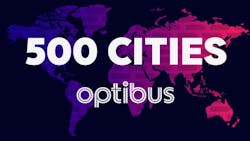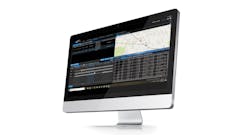Park City, Utah, has become the 500th city to leverage Optibus’ technology to boost the performance and efficiency of its public transit network.
Optibus is used in cities including New York, Los Angeles, London, Melbourne, Brasilia, Hong Kong and Singapore.
Other milestones include:
- Optibus’ AI platform for planning and scheduling mass transit is being used in 23 countries, and counting, in North America, South America, Europe, Asia Pacific and Africa.
- Optibus has more than 180 employees across 11 countries.
- Optibus powers an estimated 2.5 billion annual passenger trips.
- Optibus use results in the reduction of an estimated 100,000 tons of CO2 emissions annually.
The prevalence of innovative and intuitive software for planning and scheduling transportation in so many cities around the world is an outgrowth of significant trends and historic challenges facing the public transportation industry over the past decade, says Optibus.
A rise in urbanization has increased the need for public transportation, yet municipal transport budgets have not grown at a relative pace in many places. There has been extensive innovation in the mobility industry, largely related to micromobility and autonomous vehicles – yet despite serving a much larger population, public transportation has lagged, relying for too long on manual calculations, spreadsheets, or slow and cumbersome legacy tools, Optibus notes.
More recently, the COVID-19 pandemic has made it clearer than ever that public transit is an essential service, not only enabling essential workers to help everyone around them, but also (coronavirus restrictions permitting) connecting all residents with health care, food, education, jobs and culture, and, at a time of so many broken connections, with each other and with their family, friends and communities.
The pandemic has shown just how crucial it is for transportation providers to be agile and innovative – whether that means changing timetables from one day to the next or incorporating scooter docking stations into transit planning or figuring out how to meet passenger needs better by integrating fixed routes with on-demand transit.
The dramatic decline in air pollution during pandemic lockdowns also showed what the world could look like if successful at lowering emissions significantly. Optibus says it is proud to be working toward zero emissions to nourish sustainable cities. By enabling public transit to be more frequent, more reliable and more appealing to passengers, Optibus contributes to a reduced need for car usage and reduced congestion and pollution, while making way for more open streets for people, not cars, like those that have flourished in cities around the world over the past year. And by working with public authorities, private operators and partners to electrify bus fleets, Optibus says it is helping clean the air.
Now cities and towns worldwide are recognizing the need for fast, intuitive, advanced technology to improve transit equity, nourish sustainable cities, and connect people with their communities. With over 2.5 billion passenger journeys now powered annually by Optibus in 500 cities, it’s clear that the digital transformation of the public transit industry is well underway.



